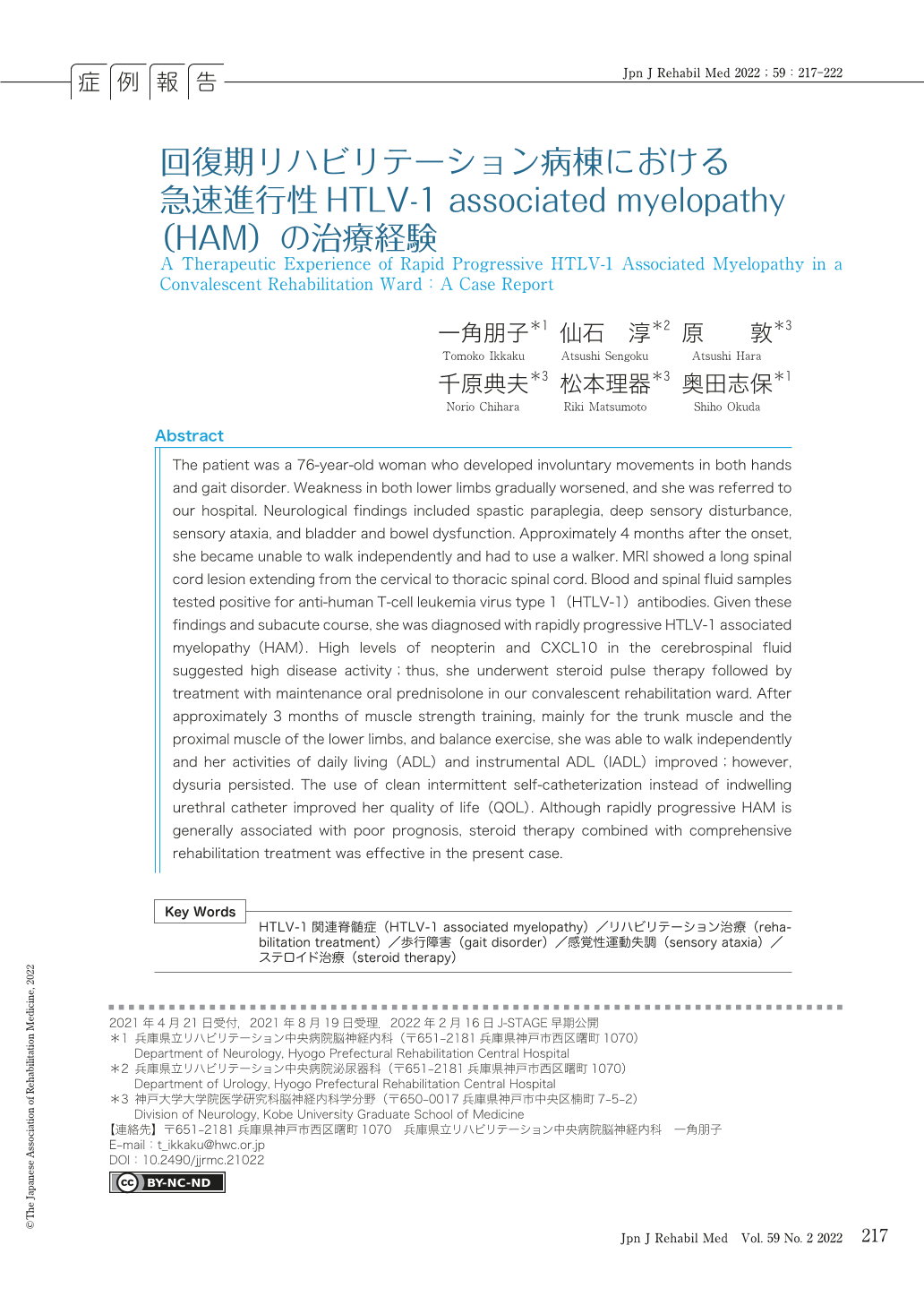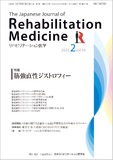Japanese
English
- 販売していません
- Abstract 文献概要
- 1ページ目 Look Inside
- 参考文献 Reference
はじめに
HTLV-1関連脊髄症(HTLV-1 associated myelopathy:HAM)は,ヒトT細胞白血病ウイルス1型(human T-cell leukemia virus type 1:HTLV-1)が原因で起こる両下肢の痙性対麻痺を主徴とした慢性炎症性の脊髄疾患である.HAM患者の多くは緩徐進行例だが,15%程度の患者は発症から2年以内に片手杖歩行レベル以上に悪化する急速進行例と報告されている1).急速進行性HAMは一般的に予後不良とされているが,われわれは早期のステロイドパルス療法後に,回復期リハビリテーション病棟でステロイド内服治療を継続し,リハビリテーション治療を行った結果,歩行障害や日常生活活動(activities of daily living:ADL),手段的ADL(instrumental ADL:IADL)が改善した症例を経験した.急速進行性HAMのリハビリテーション治療に関する報告は少なく2),また,薬物治療を考えるうえでも貴重な症例と考え,若干の文献的考察を加えて報告する.なお,本報告に際し,患者には口頭および書面にて十分な説明を行い,了承を得た.
The patient was a 76-year-old woman who developed involuntary movements in both hands and gait disorder. Weakness in both lower limbs gradually worsened, and she was referred to our hospital. Neurological findings included spastic paraplegia, deep sensory disturbance, sensory ataxia, and bladder and bowel dysfunction. Approximately 4 months after the onset, she became unable to walk independently and had to use a walker. MRI showed a long spinal cord lesion extending from the cervical to thoracic spinal cord. Blood and spinal fluid samples tested positive for anti-human T-cell leukemia virus type 1 (HTLV-1) antibodies. Given these findings and subacute course, she was diagnosed with rapidly progressive HTLV-1 associated myelopathy (HAM). High levels of neopterin and CXCL10 in the cerebrospinal fluid suggested high disease activity;thus, she underwent steroid pulse therapy followed by treatment with maintenance oral prednisolone in our convalescent rehabilitation ward. After approximately 3 months of muscle strength training, mainly for the trunk muscle and the proximal muscle of the lower limbs, and balance exercise, she was able to walk independently and her activities of daily living (ADL) and instrumental ADL (IADL) improved;however, dysuria persisted. The use of clean intermittent self-catheterization instead of indwelling urethral catheter improved her quality of life (QOL). Although rapidly progressive HAM is generally associated with poor prognosis, steroid therapy combined with comprehensive rehabilitation treatment was effective in the present case.

Copyright © 2022, The Japanese Association of Rehabilitation Medicine. All rights reserved.


